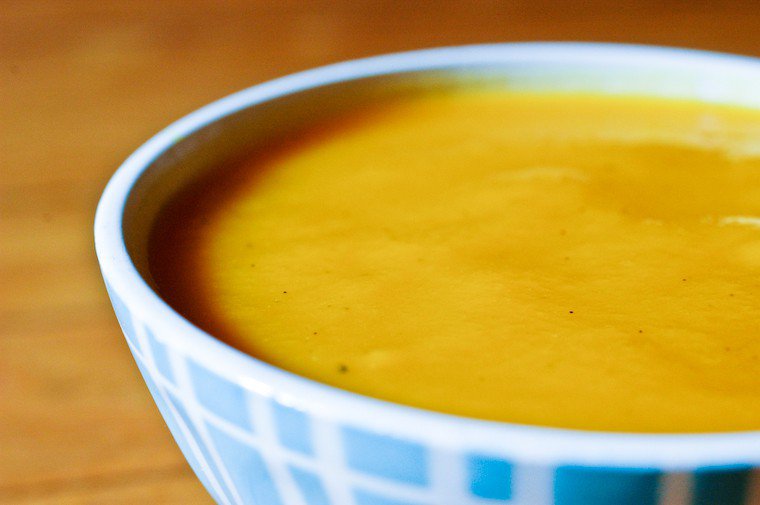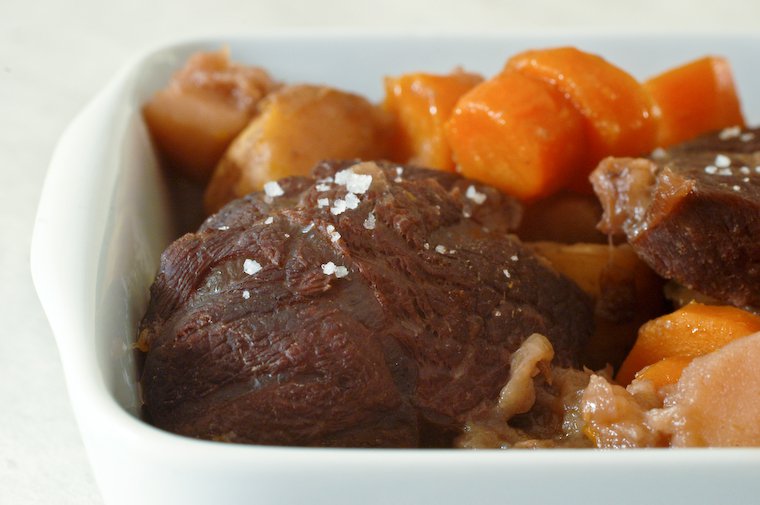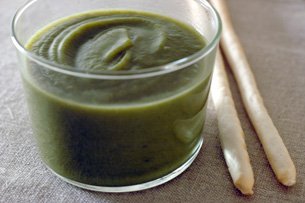If it sort of seems from my recent postings that all I eat these days is soup, well, it’s not very far from the truth. But see, all those winter vegetables are really begging for it, and I don’t have the heart to turn them down. Besides, since I am now equipped with a cast-iron cocotte and an immersion blender, it’s only courteous of me to use them, right?
Today’s featured soup was made with a large chunk of butternut squash bought at the farmers’ market on Saturday morning. My favorite produce stall (when you come out of the Rome metro station and walk through the market, it is the penultimate stand on your right, with a pretty salesgirl and an older bearded man who gives clementines to children) had impressive specimens, chubby at the base with two-feet-long necks curled like a swan’s. I recoiled at first, never having bought such a huge vegetable before, but the salesgirl explained that they sold them in smaller sections if desired, which felt more manageable: I bought about a third of one, which still weighed in at two kilos.
Back home, I started cutting and peeling the squash, which is always a bit of a pain one has to admit, but not so bad if you’re listening to Jack Johnson on the stereo. I softened some onions, added in the squash, poured in water to cover (I seldom have stock on hand, sue me), and brought the soup to a simmer. I then surveyed my unabashedly disorganized spice rack — a simple ledge running the length of the counter — in search of something to spike up the soup. Cumin, pimentón, ginger maybe?
But no. All these possibilities were brushed aside when I spotted the smoked glass jar of vanilla paste (which my friend Alisa kindly brought back to me from Trader-Joe-land) and I decided to use that instead, to very pleasing results: vanilla complemented the sweetness of the squash beautifully, adding nuance and a supple kick to it. It would be a good idea to make the soup a day ahead (or make sure you have leftovers) because the vanilla aromas had blossomed more fully the next day.








